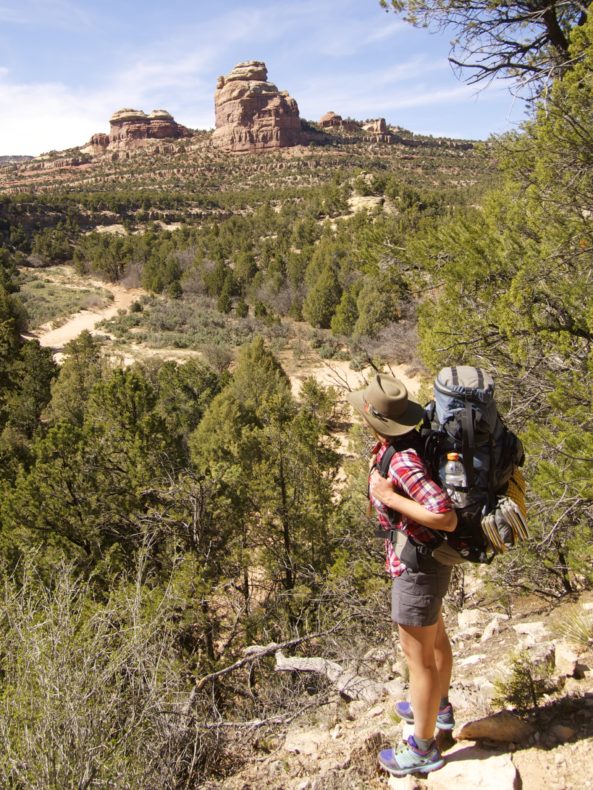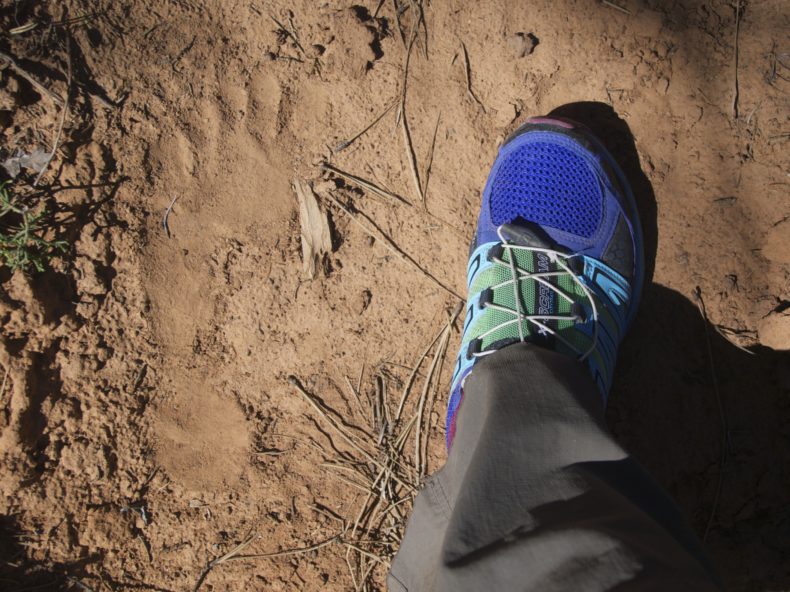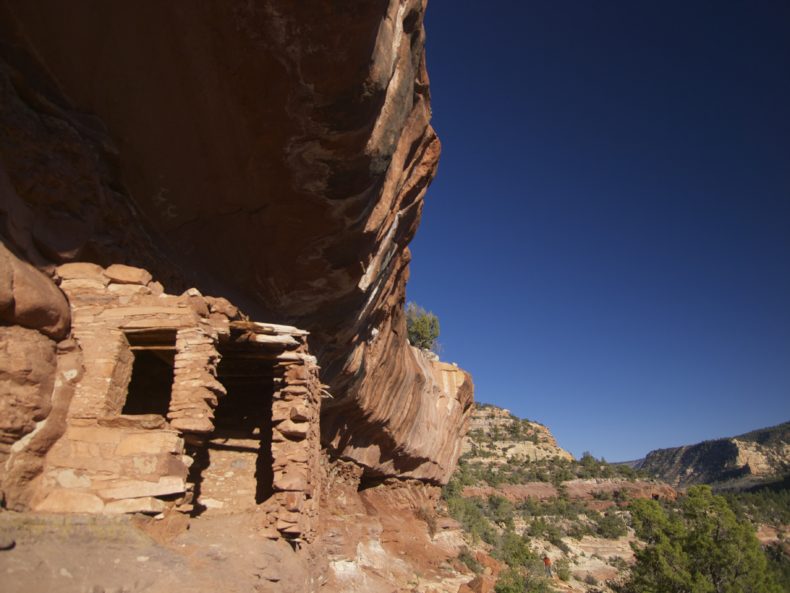 Bears Ears is one of the last places in the desert southwest where the marks left by mankind on the landscape are whisper-light. It doesn’t surprise me to hear that our President has never set foot there or on Grand Staircase-Escalante National Monument. He has no business in either place.
Bears Ears is one of the last places in the desert southwest where the marks left by mankind on the landscape are whisper-light. It doesn’t surprise me to hear that our President has never set foot there or on Grand Staircase-Escalante National Monument. He has no business in either place.
February 2014: A rough dirt road, muddy with snow, runs between two curious buttes that resemble a bear’s upright ears. Behind the buttes, we leave the car on the rim and plunge down into a series of canyons that will lead us on a 42-mile loop through the Dark Canyon Wilderness.
In four days we will see no other people and only a few signs of mankind: a scrap of black on white pottery, two small ruins tucked into alcoves – ancient handprints still visible patting the red mud mortar between sandstone bricks – and a set of barefoot human footprints that lead us through the canyons for more than 20 miles. The footprints are freshly made, slightly smaller than my size 8 feet, with a long, sure stride I could barely match in my hiking sneakers.
The bare feet lead us across miles of abrasive sand, sharp rocks, thickets of cactus and around every bend of the canyon, I hope we might see their maker up ahead. Are we following a barefoot hippy or a Southwest unicorn? Are these hoofbeats from a horse or a zebra? I have heard rumors of Native Americans who still live semi-nomadically, eschewing modern reservation life in favor of disappearing into the wilderness. If unicorns still exist in canyon country, barely-mapped and seldom-explored Bears Ears is the last best place for them.
On that trip, I found out how hard it can be to make a living in the desert, even with modern conveniences like backpacks and camelbacks and water filters. The first 12 miles of the first canyon were flush with water, snowmelt trickling down from the rim. As we hiked down canyon, springs appeared intermittently in rocky basins, often disappearing under gravel. We drank our fill of water and pumped more with my water filter. As the canyon opened up, our side canyon nearing the confluence with Dark Canyon, we didn’t stop again to top off our reservoirs and by the time we hit the main canyon, we were two liters shy of our full capacity of 8.5 liters. Classic desert hiking mistake.
The main canyon, though bigger, was bone dry. We followed the footprints a few snaking miles through the sandy wash and not finding water we dry camped, now as careful as possible with the precious liters we had left. By the time we hit a water source the next day, 12 miles of slogging through loose sand later – occasionally spotting a barefoot footprint – my partner and I were both out and desperately thirsty. In nearly two decades of hiking I’ve only run out of water twice: in Dark Canyon and on a surprisingly dry ridge-line on the Appalachian Trail in Virginia. Running out is like treading water in the ocean; keeping calm and conserving energy are key to making it to the other side.
By the time we finally turned a bend and dropped to our knees under a massive juniper tree where a little spring burbled out of the wash, the water was Salvation Water: the kind of water that sets the bar for water for the rest of your thirsty life. Just clean and clear enough to host two large toads, we sat by that small pool for over an hour, guzzling liters of lemonade powder-flavored toad water as fast as we could pump and treat it. My thirst slaked, I finally noticed the footprints. The tracks sailed right on past this spring. Why settle for toad water, when you know where to find better?
A few miles later, we hit our side canyon, the one that would eventually take us back up to the rim and here we parted ways with the tracks, which kept following Dark Canyon deeper into the wilderness. If only I could have followed those footprints, the things I could have learned: where to drink, how to eat, how to feel at home in this ruggedly beautiful place. Hippy or unicorn, horse or zebra, following that surefooted barefoot being for those 20 magical miles, matching their tracks as best as I could, was one of the greatest honors of my desert life.
_____________
Mary Caperton Morton’s first book, Aerial Geology: A High-Altitude Tour of North America’s Spectacular Volcanoes, Canyons, Glaciers, Lakes, Craters, and Peaks, was published by Timber Press in October. She is a Friend of LWON.
The photos are all hers.


Wow. Just wow. Thanks for writing this. It brightened my lunch.